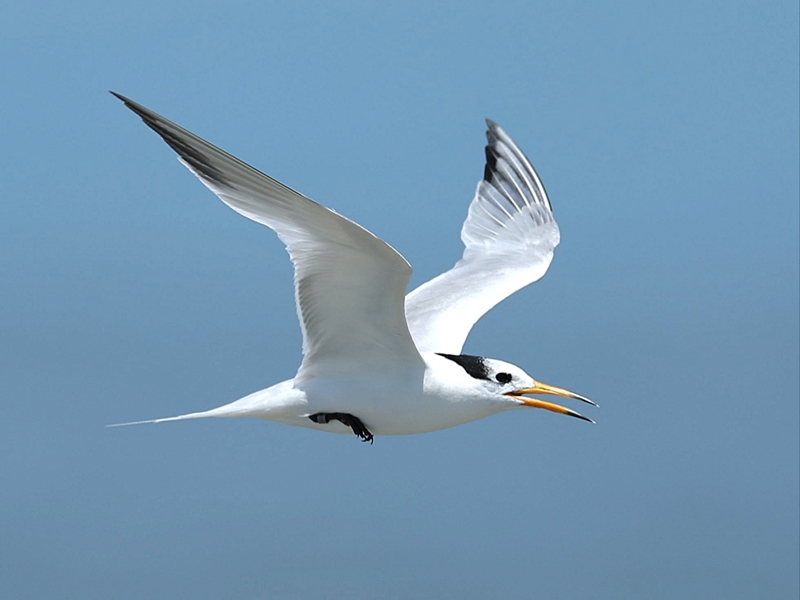
The Ministry of Environment on June 11 said Honam National Institute of Biological Resources and the National Institute of Ecology completely decoded the genetic data of the Chinese crested tern, an internationally endangered species. (Ministry of Environment)
By Lee Dasom
Domestic researchers have completely decoded the genetic data of the Chinese crested tern, an internationally endangered species.
The Ministry of Environment on June 11 said Honam National Institute of Biological Resources and the National Institute of Ecology (NIE) analyzed the entire genome of the bird and obtained the base sequence of 1.17 billion chromosomes.
Genomic analysis provides essential fundamental data used to study basic biology of a species and diversity preservation.
The NIE has studied the ecology of the domestic tern population over the past 10 years, confirming its breeding for the first time in 2016 on Yuksando Island in Yeonggwang-gun County, Jeollanam-do Province.
Since July last year, the two think tanks have conducted whole genome analysis to identify the ecological and genetic traits of the bird.
The researchers analyzed the base sequence of the domestic tern population based on the decoded genetic data, finding that the bird has an extremely low genetic diversity with only about five differences in 10,000 sequences.
This level is lower than those of two other globally endangered species: the giant panda (12 differences) and the whopping crane (17).
Both institutes obtained high-quality genomes of the tern through their study for use in devising strategies for systematic restoration and preservation of the species.
This rare seabird has been designated "critically endangered" by the International Union for Conservation of Nature, with just about 100 of them left worldwide including in Korea, China and Taiwan. In 2022, the ministry classified the tern as a Class 1 endangered wildlife species.
dlektha0319@korea.kr
Most popular
- Military discharge sets stage for reunion of all 7 BTS members
- BTS to mark 12th anniversary of debut with 2-week festival
- Lee Jae-myung officially sworn in as nation's 21st president
- Presidents Lee, Trump discuss tariff deal in first phone talks
- President's 1st executive order is launch of economic task force
